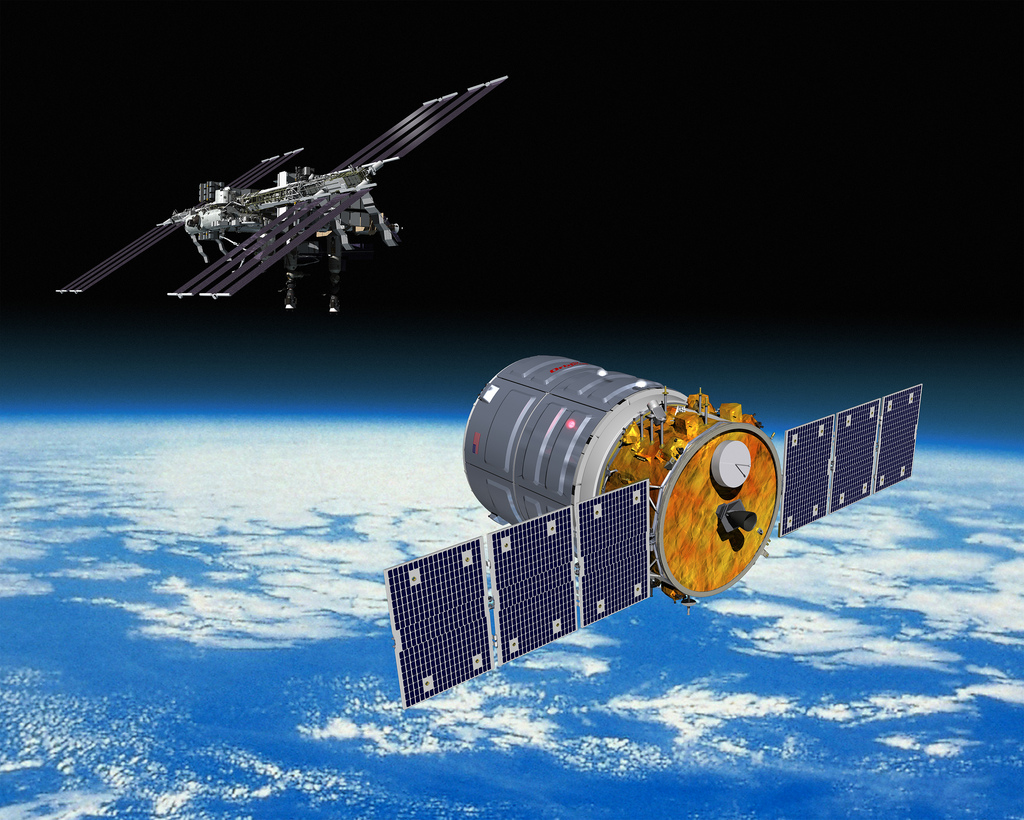| Online: | |
| Visits: | |
| Stories: |
Science-laden Cygnus spaceship ready for takeoff
 |
| Artist’s concept of a Cygnus supply spacecraft approaching the International Space Station. Credit: Orbital Sciences Corp. |
Excerpt from
spaceflightnow.com
A commercial Cygnus supply freighter set for launch Monday will transport a motley mix of experiments to the International Space Station, helping scientists engaged in a range of research disciplines from studying the birth of the solar system to helping astronauts survive marathon missions in space.
Materials carried aboard the Cygnus supply ship include a high-resolution camera to detect meteors from the space station, a study to measure blood flow from the brain to the heart in astronauts, and an array of experiments from grade school and university students, officials said Sunday.
About one-third of the nearly 5,000 pounds of cargo stowed inside the craft’s pressurized cabin will go toward scientific endeavors, according to Camille Alleyne, NASA’s assistant space station program scientist.
The rest of the supplies will sustain the space station and its crew with spare parts, tools, food, clothes and other essential gear.
Owned and operated by Orbital Sciences Corp., the Cygnus spacecraft is set for launch at 6:45 p.m. EDT (2245 GMT) from the Mid-Atlantic Regional Spaceport at Wallops Island, Va.
The unpiloted cargo carrier will take off on top of Orbital’s expendable two-stage Antares rocket. Named SS Deke Slayton in honor of the Mercury astronaut, Cygnus is due to arrive at the space station Nov. 2 after an automated laser-guided final approach.
Its docking with the space station will punctuate a busy week of comings-and-goings at the outpost.
Once the next Progress spacecraft docks to the station a few hours after its launch Wednesday, Orbital’s Cygnus spacecraft will be cleared to rendezvous with the orbiting research laboratory.
The series of four arrivals and departures in eight days represents a particularly busy period for traffic at the space station, but officials said a regular cadence of resupply missions is indicative of the station’s scientific utility.

Source: http://www.ascensionearth2012.org/2014/10/science-laden-cygnus-spaceship-ready.html




